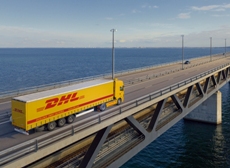World trade growth is clearly slowing, with Asia the worst affected region, according to the latest DHL Global Trade Barometer, released just ahead of the forthcoming G20 meeting in Argentina.
With an overall index of 61 points, the GTB’s analysis of international air and containerized ocean trade flows indicates that the development of the previous quarters will continue, Deutsche Post DHL underlined. Indices for all seven countries that constitute the GTB index are above 50 points, which corresponds to a positive growth forecast according to the underlying methodology.
The pace of growth, however, is further slowing in all index countries. This deceleration will be particularly strong in Asia (except for China). Index values for India, Japan and South Korea have dropped by eight, six and five points respectively compared to the previous release of the GTB in September. With an overall index of 75 points, India, however, continues to be the country with the strongest trade growth forecast.
“Trade is slowing down. Both air and ocean are down,” Tim Scharwath, CEO of DHL Global Forwarding, Freight, told international journalists, including CEP-Research, at a briefing in New York on Wednesday.
“The DHL Global Trade Barometer clearly shows that the state of global trade remains solid. Both air and ocean trade continue to grow around the world. However, given the smoldering trade conflicts, especially between the US and China, and economists’ expectations that the global economy could cool down, it is not entirely surprising that trade momentum has weakened slightly,” he stated.
In terms of world regions, trade growth in the US (61 points) and China (58 points) remains solid. Both countries’ momentum of growth is slowing only moderately by two and one points, respectively – even though both countries would have much to lose if their trade conflict escalated.
Scharwath told journalists that many US importers had already filled up their warehouses earlier this year to avoid the cost effects of higher trade tariffs but emphasised: “US consumers are still buying.”
With a two-point decline and an index value of 56 points, Germany’s loss of trade growth momentum turns out to be moderate, too, compared to September. While the UK was able to keep its GTB index unchanged in the previous release, its growth forecast has now deteriorated noticeably by four points. This makes it the index country with the weakest growth forecast. With 53 points, the UK is only slightly above the 50-point mark, which indicates stagnation in trade growth.
Looking at air and ocean freight trends, DHL said the worldwide deceleration of trade growth is attributable to declines in both containerized ocean freight and international air trade after a peak year with exceptionally high volumes in 2017. South Korea is the only country whose growth forecast for ocean trade remains unchanged. In all the other countries, the outlook for ocean trade is declining. Furthermore, the air trade outlook is going down in every index country.
In terms of individual sectors, Industrial Raw Materials contributed most to international trade growth, followed by Machine Parts and Basic Raw Materials. The weakest growing categories were Consumer & Household Goods, Capital Equipment and Machinery Parts.
Launched in January 2018, the DHL Global Trade Barometer, which is based on large amounts of logistics data, is an innovative and unique early indicator for the current state and future development of global trade, according to the company. The next release date is scheduled for March 27, 2019 – two days before Brexit.










